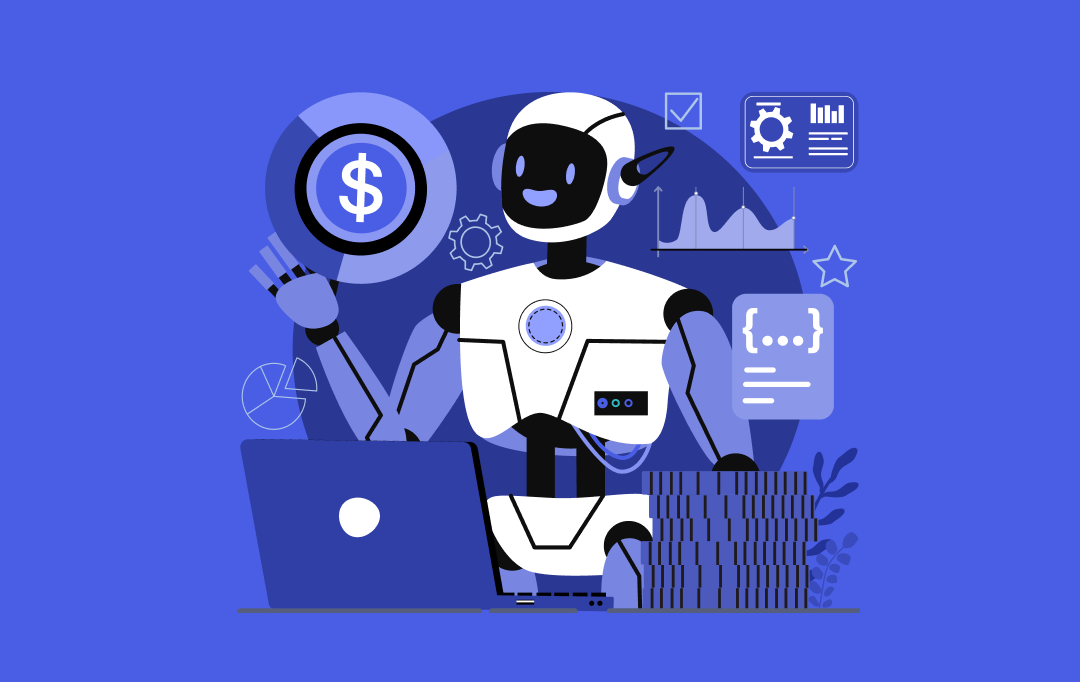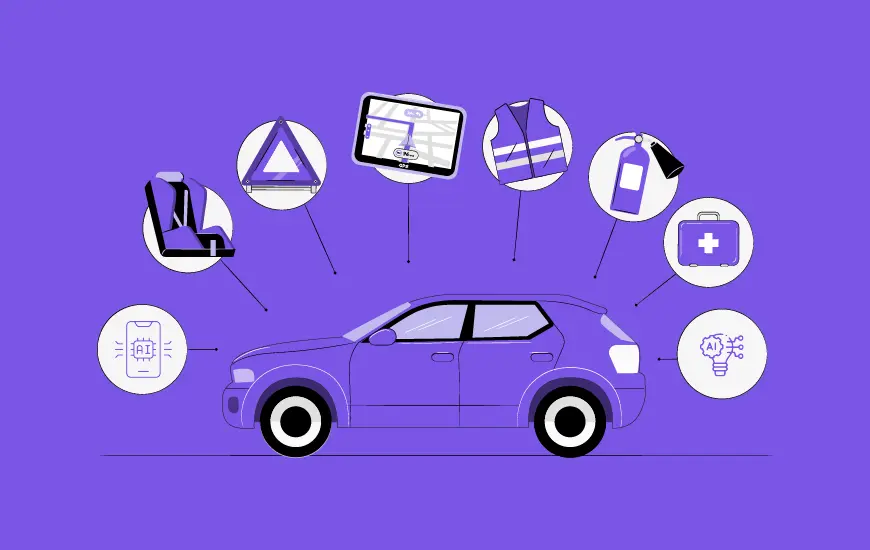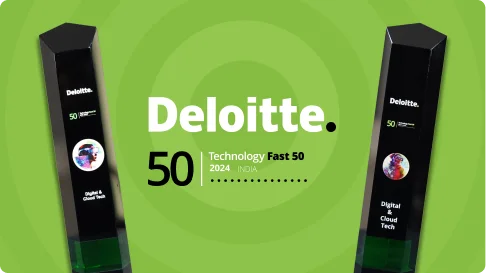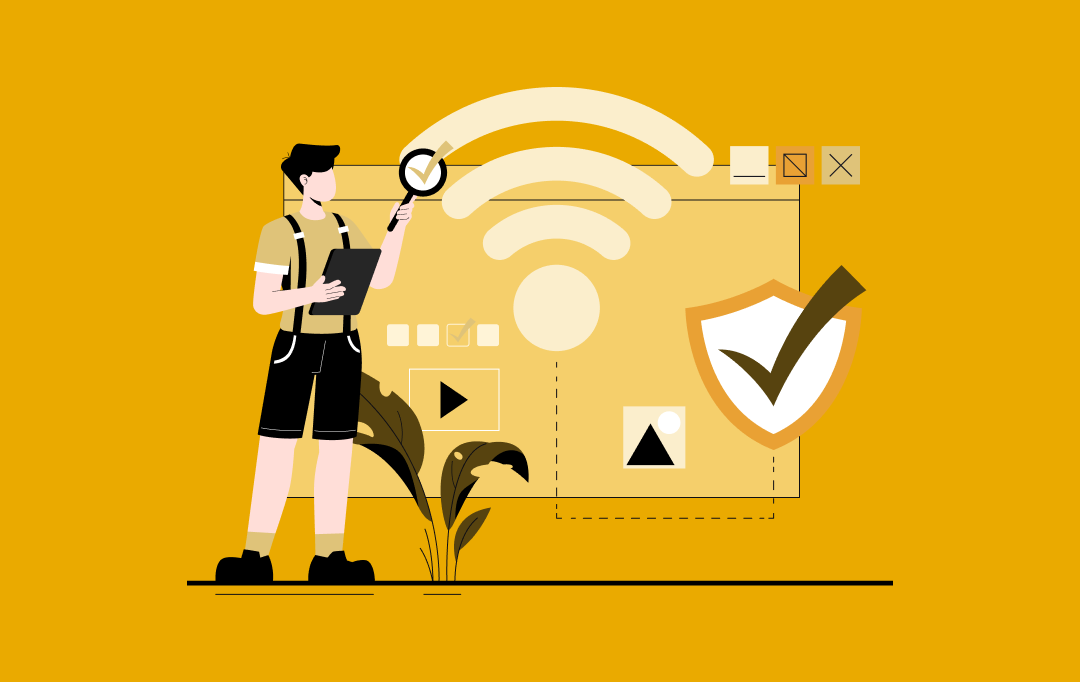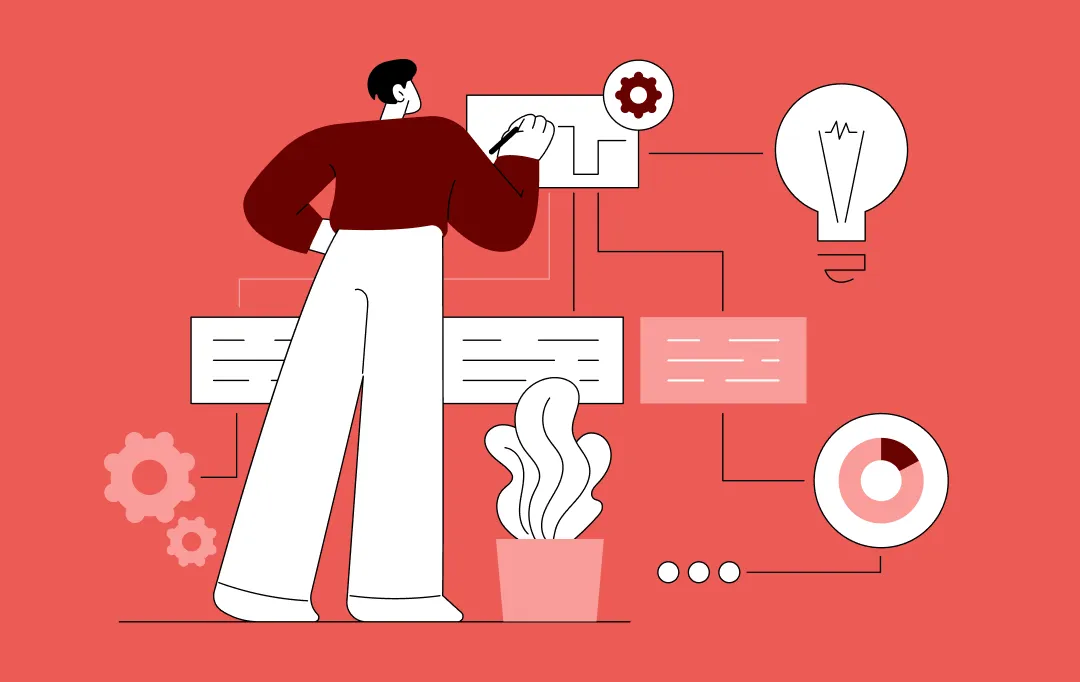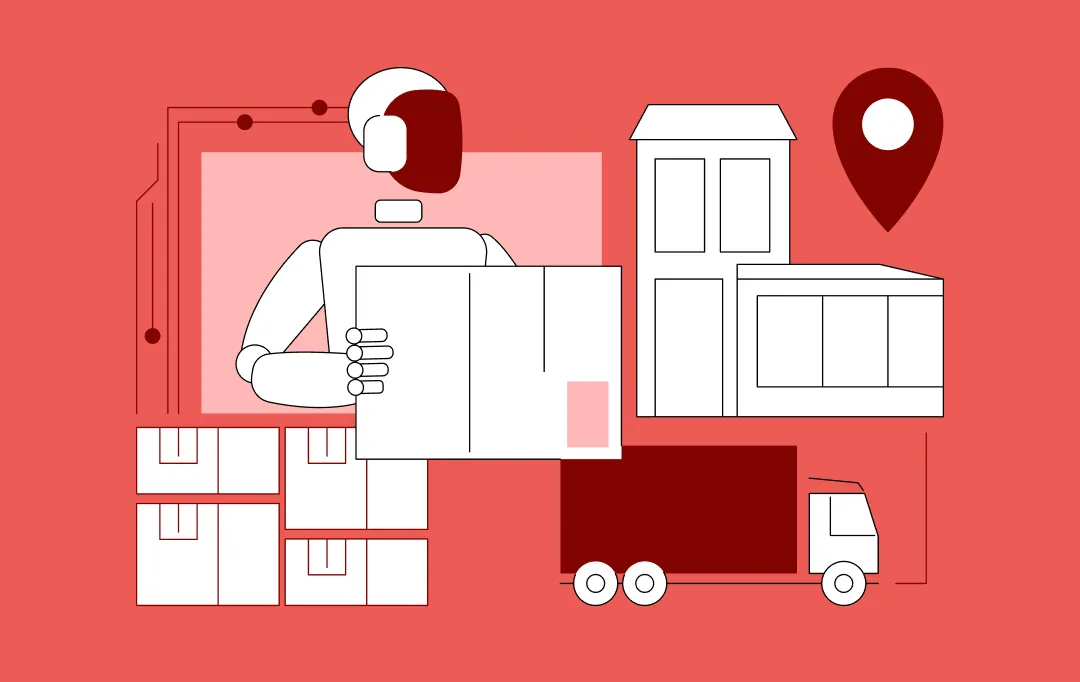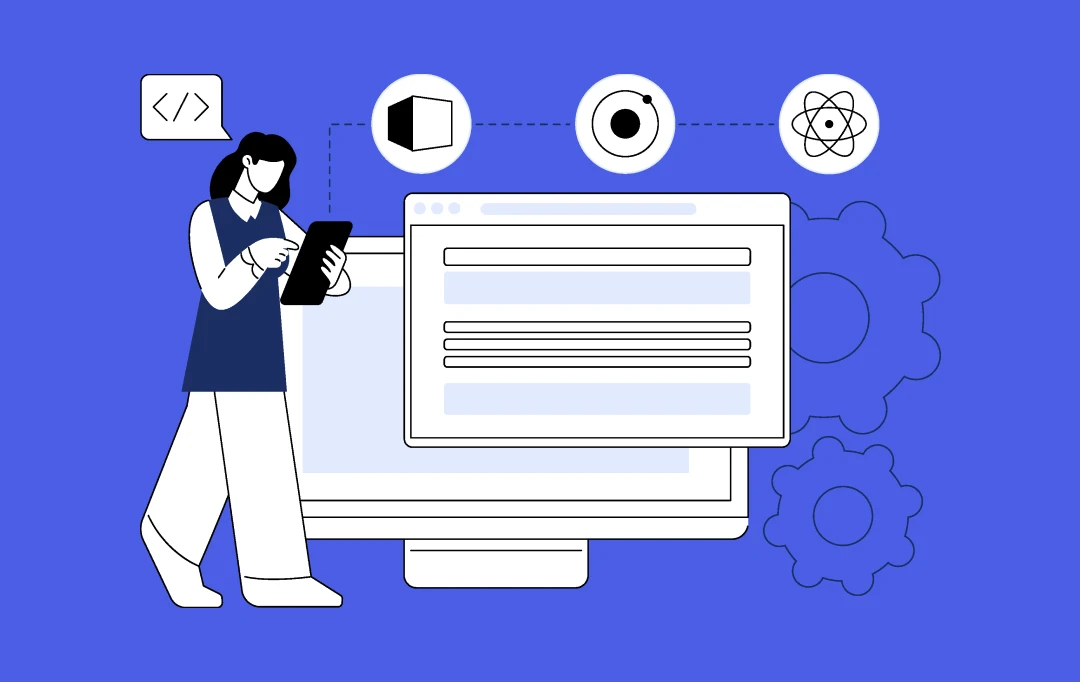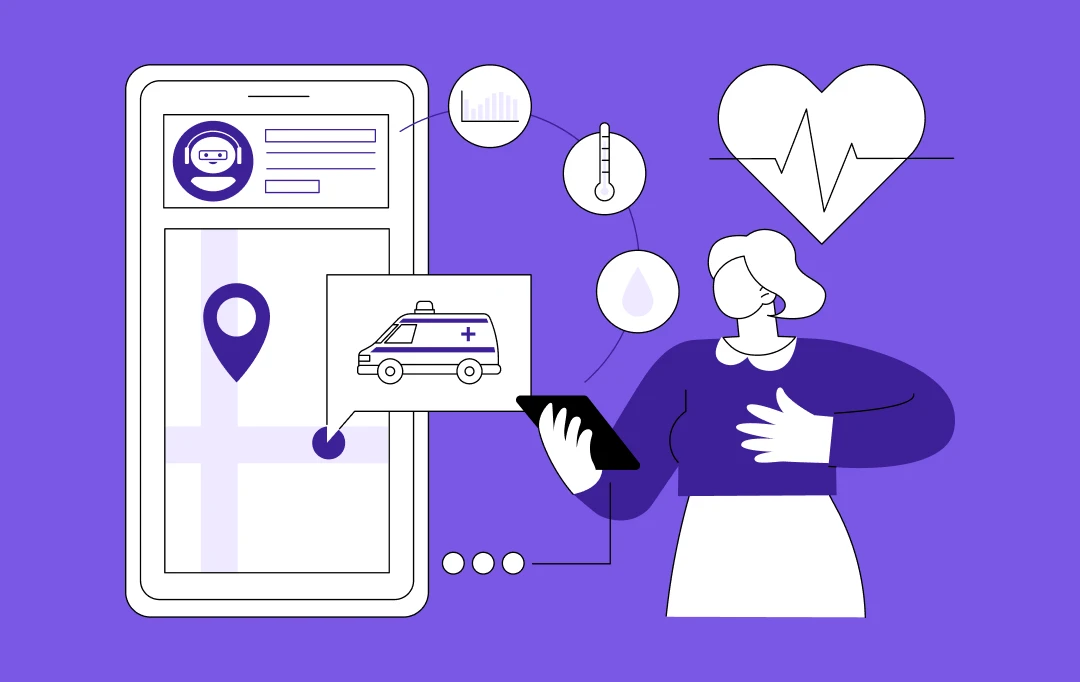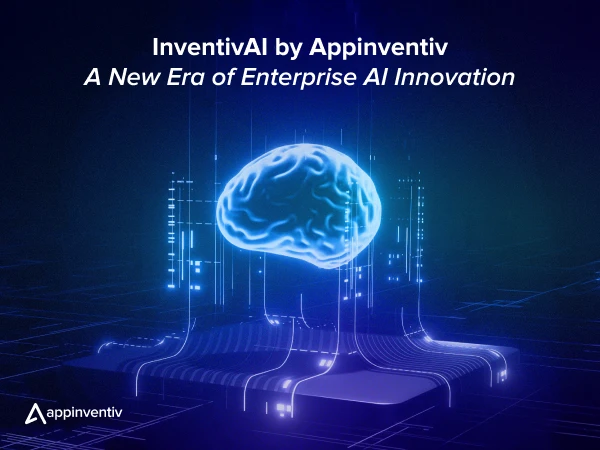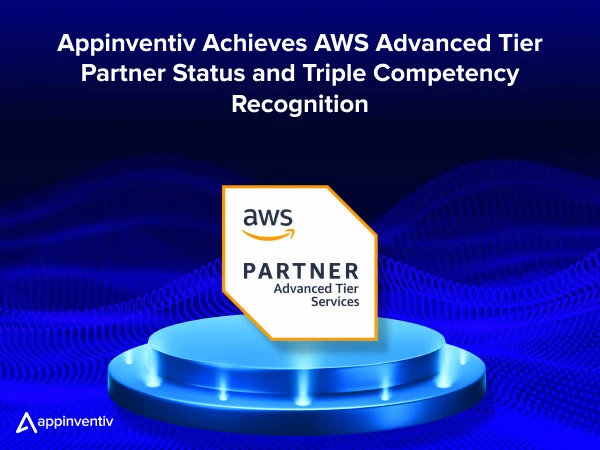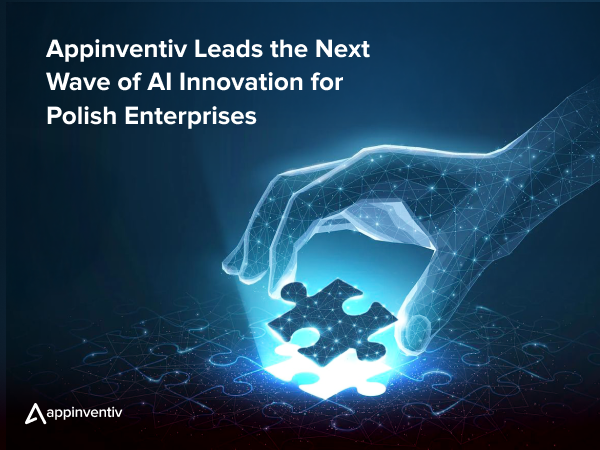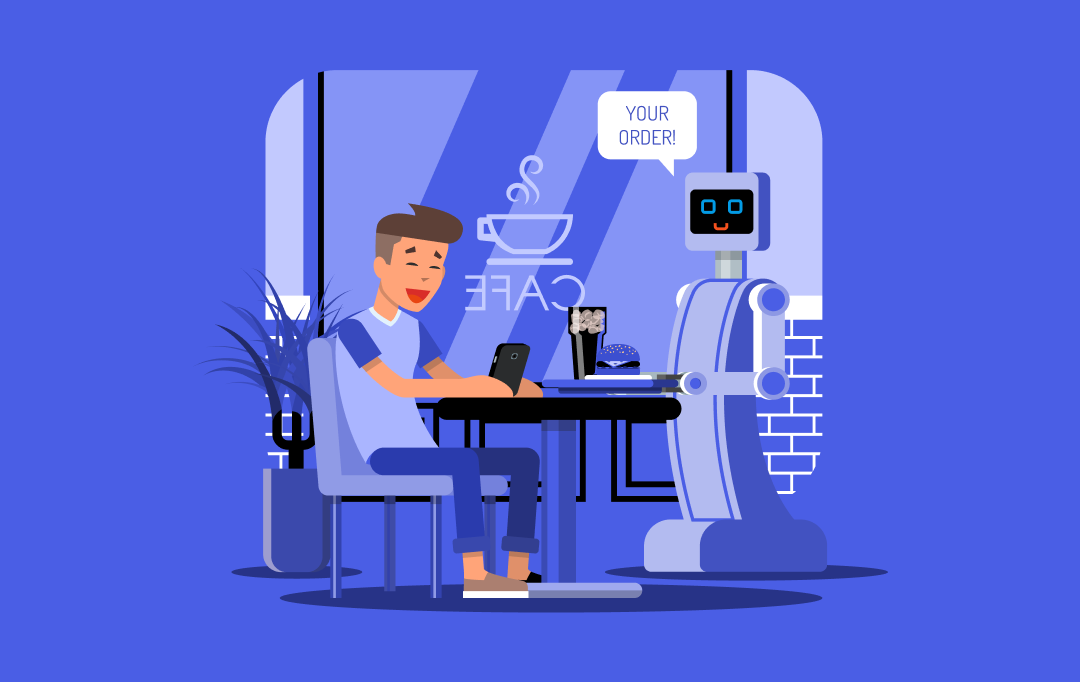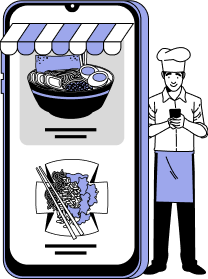- Understanding the AI Restaurant Era
- Difference Between AI and Machine Learning in Restaurants
- AI Adoption & Automation in Restaurants
- Benefits of AI in Restaurants
- AI Use Cases in the Restaurant Industry
- Personalized Customer Experiences
- Making Restaurant Reservations Easier
- Chatbots for Customer Service and Ordering
- Optimizing Back-of-House Workflow
- Customer-Feedback Analysis
- Reducing Food Waste with Demand Forecasting
- Dynamic Menu Pricing
- Automated Food Delivery
- Social Media Marketing Automation
- Business Analytics for Smarter Decision-Making
- Real-Life Examples of How Restaurants Are Leveraging AI
- Chipotle
- KFC
- Wendy’s
- Just Salad
- McDonald’s
- AI Agents & AI-Powered Chefs: The Next Big Things in Restaurants
- AI Agents
- AI-Powered Chefs
- How to Implement AI in Your Restaurant: A Step by Step Process
- 1. Identify Areas for AI Integration
- 2. Audit Your Data AI runs on data
- 3. Choose the Right Tools
- 4. Choose the Right Partner
- 5. Integrate AI with What You Already Have
- 6. Test It Out First
- 7. Scale Up Gradually
- 8. Measure, Analyze, and Iterate
- The Reality Check: AI Limitations in Restaurants and How to Overcome Them
- Data Quality Issues
- Integration Complexities
- Staff Resistance and Training Challenges
- Limited Contextual Understanding
- Rising Last-Mile Delivery Costs
- AI Restaurant is the Next Big Thing!
- Let Appinventiv Help You Lead the Change
- FAQs
- Q. How much does it cost to implement AI in a restaurant?
- Q. How does AI help improve customer experience in restaurants?
- Q. What are ethical and privacy concerns when using AI in restaurants?
- Q. How long does it take to deploy AI in restaurant operations?
- Q. What are the limitations of AI for restaurants?
- Q. How is McDonald’s using AI?
- Q. How can AI be used in a restaurant?
- Q. Why should restaurants implement AI?
Key takeaways:
- The global AI market for restaurants is expected to see rapid growth, with more restaurants adopting AI for better decision-making.
- AI is revolutionizing restaurant operations by streamlining tasks like order management, inventory tracking, and customer service.
- AI-driven tools such as chatbots, predictive analytics, and voice recognition are enhancing customer interactions.
- Implementing AI can reduce operational costs, improve accuracy, and drive customer satisfaction.
If you walk into a restaurant today, you might be greeted by a robot, place your order on a screen, or get personalized food recommendations based on what you’ve ordered before. What once felt futuristic is now quietly becoming part of our everyday dining experience, all thanks to AI in restaurants.
Also, artificial intelligence in the restaurant industry goes far beyond just flashy tech like robot waiters or touchscreen menus. The real work is happening at the backend. AI for restaurants is helping them handle everything from taking reservations and predicting food demand to managing inventory and reducing waste.
This growing use of AI in restaurant industry settings is helping businesses operate more efficiently and adapt to changing customer expectations.
But automation in restaurants is not just limited to big chains like McDonald’s or Domino’s. Whether running a small café or scaling up a multi-location AI restaurant, you can use AI tools to keep up with rising costs and labor shortages, while still delivering great service. Whether automating phone calls, scheduling staff, or recommending popular menu items, AI can be a significant helper in the kitchen and front of house.
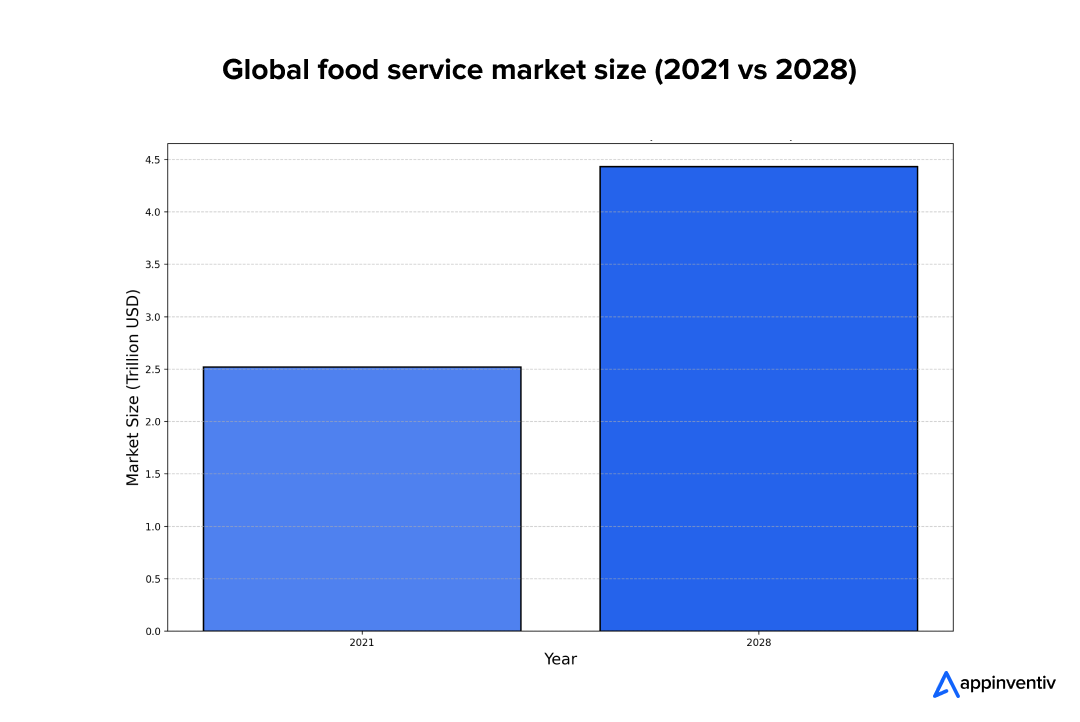
According to Statista, the global food service market was valued at $2.52 trillion in 2021 and is expected to grow to $4.43 trillion by 2028, with a CAGR of 9.9%.
With the industry expanding so quickly, and AI in restaurant industry solutions becoming more accessible, now is the perfect time to explore the benefits of AI in the restaurant industry. In this blog, we’ll walk you through 10 real-life use cases that show how AI is reshaping modern restaurants, along with examples of how leading brands are putting it into action.
Understanding the AI Restaurant Era
Have you ever opened a food app and thought, “How did it know I wanted tacos and pizza today?” That’s not magic, it’s artificial intelligence quietly working behind the scenes. Big players are going all-in on AI-powered food delivery app development, completely flipping their food service game while droppin’ a killer customer experience.
AI in restaurant industry operations is already transforming the food sector in ways many diners don’t notice. All over the world, from Los Gatos to Nairobi, we’re seeing the rise of “AI restaurants.” At Burgerbots in California, robotic systems can assemble a burger in just 27 seconds.
However, using artificial intelligence in restaurant industry goes far beyond time savings. It can recognize loyal customers, tailor their experience, predict demand, and even help design menus that resonate with local tastes. In quick-service restaurants, an AI-powered QSR solution can make handling rush hours easier, reducing errors, and delivering consistent quality at scale.
Difference Between AI and Machine Learning in Restaurants
AI allows computers to mimic human behavior, like responding to customer voice commands, processing orders, and managing kitchen workflows. But machine learning takes things a step further. It allows restaurant systems to learn from customer data, historical trends, and real-time conditions to optimize future decisions.
Think of how Netflix or Spotify recommends new shows or songs. You get more accurate suggestions the more you use the platform. That same logic is now being applied in restaurants to recommend menu items, predict busy hours, or even suggest when to restock certain ingredients.
AI Adoption & Automation in Restaurants
Restaurants are adopting AI in three major ways:
- Upgraded Legacy Systems: AI is being integrated into core platforms like POS and inventory tools to improve efficiency and minimize food waste.
- New AI-Based Products: Robotic cooks, servers, and dishwashers are gaining attention, especially in high-traffic environments.
- API Integrations: AI capabilities are being embedded into existing systems (like KDS, CRM, and scheduling software) through API partnerships.
Now that we have seen the advantages of AI in restaurants and the major ways it’s been adopted, let’s understand the AI use cases in restaurant industry in detail.
Benefits of AI in Restaurants
Artificial intelligence in restaurants is enabling intelligent operations where it matters most:
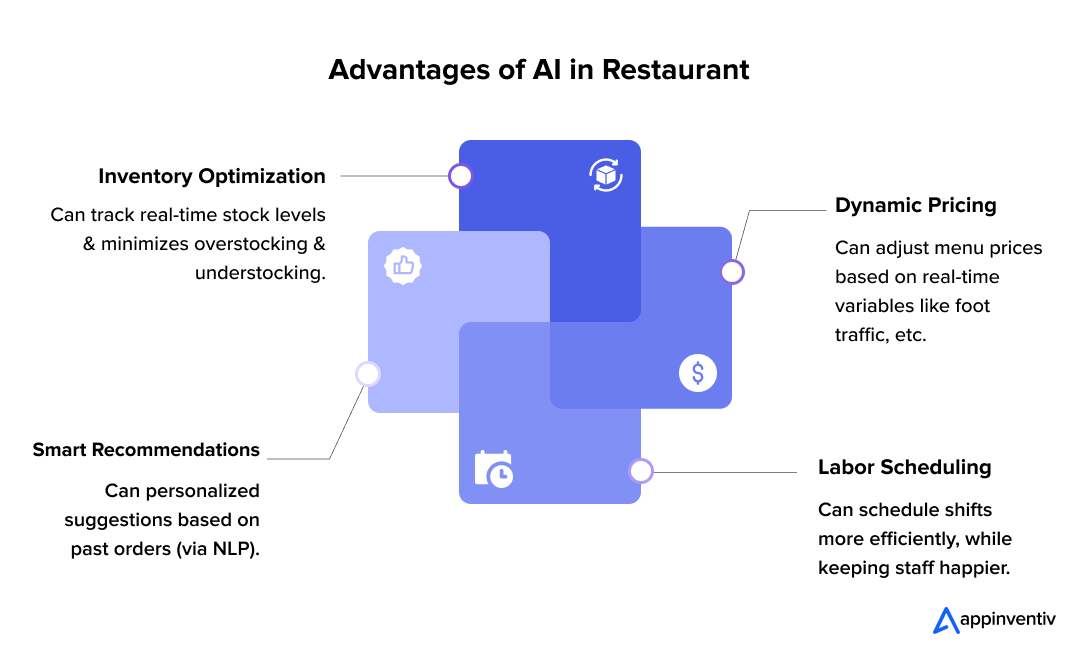
- Inventory Optimization: AI in inventory management can track real-time stock levels, analyze sales trends, and predict demand. This minimizes overstocking and reduces food waste, which are key AI restaurant automation goals.
- Dynamic Pricing: With AI, restaurants can adjust menu prices based on real-time variables like foot traffic, ingredient costs, or weather conditions. This level of flexibility is revolutionizing AI in QSR environments and shaping the modern AI powered restaurant game.
- Labor Scheduling: AI-driven forecasting helps schedule shifts more efficiently, reducing overtime, managing turnover, and keeping staff happier.
- Smart Recommendations: Restaurants can upsell more effectively using machine learning. AI offers personalized suggestions based on past orders, time of day, or the customer’s current mood (via NLP). Building a recommendation system for restaurants can help driving higher average order values.
AI Use Cases in the Restaurant Industry
The integration of AI in restaurants has transformed how the food and beverage sector operates. From predictive analytics and AI-based voice ordering to kitchen automation and dynamic pricing, the use of AI in restaurant industry is solving real-world problems. Whether you run a small cafe or an AI powered restaurant chain, the impact of AI is real! So, here are the top 10 AI use cases in restaurant industry, followed by real-life examples.

Personalized Customer Experiences
AI can analyze customer preferences, past orders, and dietary restrictions to offer personalized dining suggestions. Whether recommending dishes based on the weather or offering healthier alternatives, AI can create personalized dining experiences.
Example: A popular QSR chain uses AI solutions for quick service restaurants to track customer preferences through their mobile app. If a customer has ordered vegan dishes previously, the system will automatically recommend plant-based options when they check in. This AI-powered QSR solution might boost repeat visits.
Making Restaurant Reservations Easier
Rather than relying solely on human intuition, AI systems can predict peak times, suggest optimal reservation slots, and even handle waiting lists. This leads to a smoother dining experience for customers while improving operational efficiency during busy hours.
Example: A restaurant uses AI technology and restaurant data to predict when reservations will peak based on local events and past trends. The system suggests the best reservation slots, ensuring that customers are seated efficiently and staff aren’t overwhelmed.
Chatbots for Customer Service and Ordering
Chatbots powered by AI are taking over the customer service and ordering process. Use of AI in restaurants ranges from answering FAQs and processing orders to handling reservations, These bots offer 24/7 support across platforms like WhatsApp, Instagram, and restaurant apps. And, makes it easier for customers to engage with the restaurant anytime, anywhere.
Bonus Read: How Chatbot Development Can Help You Earn $80,000 a Month
Example: Quick service restaurants (QSRs) can use AI in QSR to deploy chatbots across their apps and websites. These bots will allow customers to place orders directly, check allergen information, and even adjust their orders in real-time. Chatbot builds customer engagement, while automating system, reducing human error, and speeding up the ordering process.
Optimizing Back-of-House Workflow
Orders piling up, ingredients needing to be stocked, and temperatures to be monitored can feel like chaos. Automation in restaurants can optimize workflows by automating routine tasks like inventory tracking, order preparation, and even kitchen temperature regulation.
Example: You use AI-powered systems to track inventory in real-time and adjust order preparation tasks. The system predicts the amount of time needed for each dish based on the current kitchen load and employee performance, helping kitchen staff prioritize tasks and ensure timely service, a key strategy for accelerating QSRs with AI.
Customer-Feedback Analysis
AI can analyze customer feedback at scale by reviewing online reviews, social media comments, and survey responses. It can identify patterns, highlight recurring issues, and even suggest actions based on the analysis.
Example: A QSR chain uses AI solutions for quick service restaurants to scan and analyze thousands of customer reviews each month. When feedback about a particular dish starts trending negatively, the system flags it for the chef to review.
Nowadays, AI-powered emotion recognition has transformed the strategies of collecting and interpreting customer feedback to get real-time emotional responses.
These examples of restaurants using AI show how smart feedback loops help keep the restaurant can keep its menu fresh and customers happy.
Reducing Food Waste with Demand Forecasting
Food waste is one of the biggest challenges restaurants face, not just from a cost perspective, but also from an environmental standpoint. An AI powered restaurant can cut down food waste by predicting how much food it’ll actually need each day.
AI for demand forecasting can predict how many guests are likely to dine on any given day and which dishes are most likely to be ordered based on past sales trends. This is one of the most practical applications of AI in restaurant industry, ensuring sustainable operations and smarter inventory prep.
Example: You can use this level of insight to prep ingredients in just the right quantities, enough to meet demand without overstocking. Also, to ensure popular menu items are always available, while reducing spoilage and cutting down on last-minute supply runs.
Dynamic Menu Pricing
AI tools integrate with your POS, inventory system, and even external data sources like local event calendars or weather forecasts. Dynamic pricing allows restaurants to automatically adjust menu prices in real time based on ingredient costs, demand, time of day, or local competition, creating a smarter AI restaurant ecosystem.
Example: The system might slightly increase the price of high-demand dishes during peak hours or weekends, and offer smart discounts during slower periods to boost foot traffic. It can also flag when ingredient prices rise, helping you adjust dish pricing before it cuts into margins.
Automated Food Delivery
Why you need a food delivery app? With more people ordering online than ever, fast and accurate delivery has become a must for restaurants, especially in the quick service restaurant (QSR) space. AI for restaurants can analyze traffic, weather, order volume, and delivery locations in real time to find the fastest delivery routes. It also helps predict how long each order will take and assigns deliveries to the right driver or delivery partner.
Example: You integrated an AI-powered delivery module into their POS system. Now, when an order comes in, the system automatically groups nearby orders, assigns the optimal delivery partner, and updates ETAs in real time for customers and kitchen staff.
Social Media Marketing Automation
If you’re a restaurant owner or developer building digital tools for the food industry, integrating AI into your social media strategy can save time and boost results. AI-powered tools can automate content scheduling, generate engaging posts, and even analyze customer interactions to improve campaign performance over time.
Example: You could use an AI tool like Buffer or Sprout Social with machine learning features that suggest optimal posting times, create personalized promotions based on customer purchase history, and track post performance.
Business Analytics for Smarter Decision-Making
By pulling data from multiple sources like POS systems, reservation logs, delivery apps, social media, and customer feedback, AI restaurant analytics tools can uncover trends, identify performance gaps, and forecast future business outcomes.
Example: By understanding which locations are most profitable or spotting why certain menu items underperform, AI business analytics will help you make faster, data-backed decisions.
Let us help you integrate advanced AI solutions that streamline operations, improve customer experience, and boost your revenue.
If you’re a restaurant owner or decision-maker still wondering how AI can actually make a difference in your day-to-day operations, you’re not alone. It’s one thing to know what the technology can do, but seeing it in action is what really brings it to life. In the next section, we’ll walk you through real examples of how well-known restaurant brands in the U.S. are using AI to solve real problems.
Real-Life Examples of How Restaurants Are Leveraging AI
From cutting food waste with predictive inventory to creating hyper-personalized ordering experiences with voice and vision technologies, artificial intelligence in restaurants is helping the brands solve real business problems while delivering faster, smarter service.
Here are some real-world examples of restaurants using AI to stay ahead of the competition.
Chipotle
Chipotle is using AI to improve kitchen operations and reduce food waste. In select Southern California locations, it’s testing PreciTaste’s AI-based kitchen management system, which predicts how much food needs to be prepped and when to start cooking.
The system uses real-time data to alert staff about ingredient levels, helping reduce over-prepping and improving kitchen efficiency. In another pilot, the brand introduced Chippy a robotic tortilla chip maker powered by Miso Robotics freeing up staff from repetitive tasks and maintaining consistency in flavor and texture.
KFC
KFC, a leading fast-food company having the world’s second-largest restaurant chain has partnered with Appinventiv to developed a smart solution for managing their restaurant deliveries and ops. Thus, Appinventiv developed seven AI-powered mobile apps across the global markets.
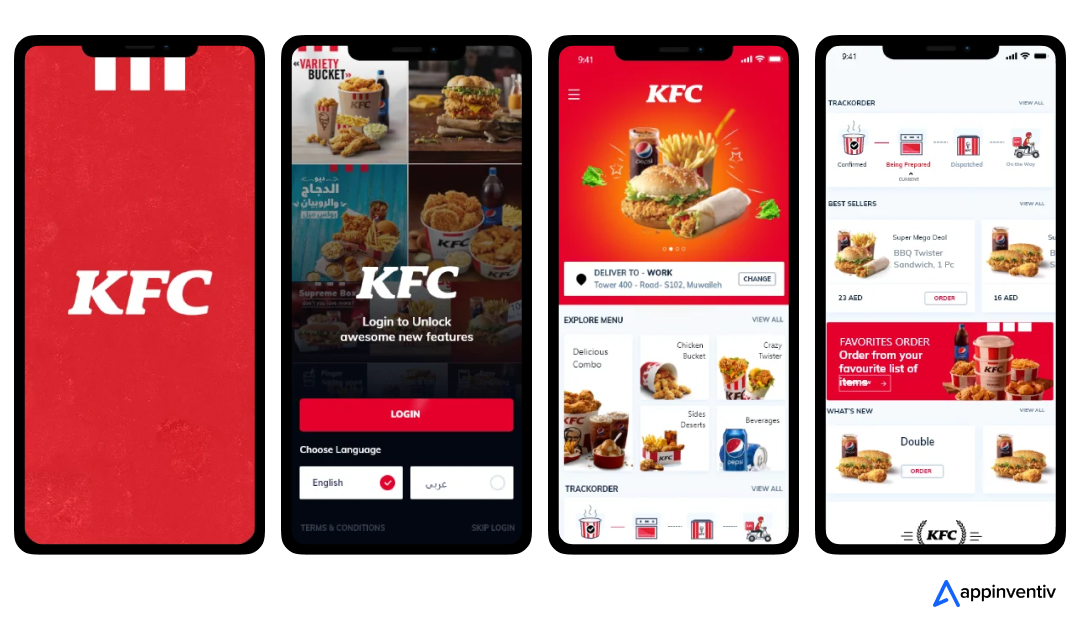
Such applications bear a critical trait for AI-powered personalization. As the apps gather data on user behavior or order history and preferences, they provide personalized meal choices and promotions for greater user interaction and satisfaction. Such personalization caused a 22% boost in conversion rates and 60% more repeated purchases.
Wendy’s
Wendy’s is reimagining the drive-thru with its new generative AI system, Wendy’s FreshAI, built in partnership with Google Cloud. This isn’t just your average voice assistant, it’s designed to understand natural, everyday conversations and manage Wendy’s complex menu with ease.
With over 200 billion possible ways to order a Dave’s Double, FreshAI helps customers get exactly what they want, faster and more accurately. During pilot tests in Columbus, Ohio, it successfully took 86% of orders without help from restaurant staff.
Just Salad
Just Salad launched Salad AI, an AI-powered recipe generator built into its mobile app to make healthy eating more personalized and stress-free. This tool helps customers navigate the menu by recommending customized salads based on their lifestyle (like vegan or climatarian), nutrition goals (like high-protein or low-carb), and flavor preferences.
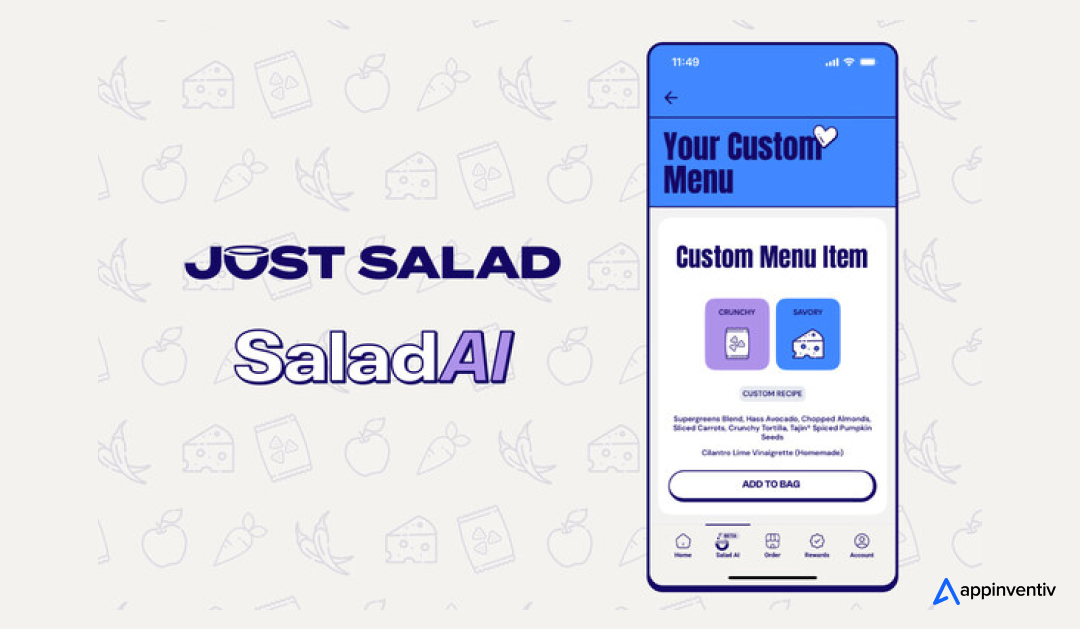
According to Founder & CEO Nick Kenner, “Salad AI goes beyond traditional menu suggestions, it creates a truly personalized dining journey that meets the evolving needs of today’s digital and health-conscious consumers.” The app generates four fully customized salads per user, complete with creative names, selected ingredients, calorie info, and dressing pairings, offering a seamless experience that blends convenience, health, and discovery.
McDonald’s
McDonald’s gone all-in on artificial intelligence in restaurants and is embracing it at scale to streamline operations and improve the customer experience across its 43,000 restaurants globally. One of its first big steps was the 2019 acquisition of Apprente, a voice AI startup specializing in fast-food ordering. Unlike traditional voice systems that convert speech to text, Apprente’s “sound-to-meaning” technology skips transcription entirely, allowing it to understand and process orders directly from speech, even in noisy drive-through environments.
McDonald’s is also exploring computer vision to verify order accuracy in real time, and even developing generative AI virtual managers to handle admin tasks, freeing store managers to focus on team and customer interactions.
As McDonald’s CEO Steve Easterbrook said, “Building our technology infrastructure and digital capabilities are fundamental to our Velocity Growth Plan.”
AI Agents & AI-Powered Chefs: The Next Big Things in Restaurants
The restaurant industry is experiencing a technological revolution, with AI agents and AI-powered chefs emerging as game-changing trends that enhance operations, improve customer service, and boost profitability. These intelligent digital assistants are transforming the way restaurants interact with customers and manage their daily operations.
AI Agents
In restaurants, AI agents serve as virtual assistants that handle everything from taking orders to managing reservations, making decisions, and creating seamless experiences for both customers and staff.
Key Applications of AI Agents:
1. Customer Service and Ordering: AI agents power chatbots on restaurant websites and mobile apps, helping customers browse menus, place orders, and track deliveries. These agents can handle multiple languages, remember customer preferences, and suggest personalized menu items based on past orders or dietary restrictions.
2. Reservation Management: Instead of tying up staff with phone calls, AI agents can manage booking systems, confirm reservations, handle cancellations, and even suggest alternative times when preferred slots are unavailable. They work 24/7, capturing bookings that might otherwise be lost during off-hours.
3. Drive-Through and Phone Orders: Advanced AI agents are now taking drive-through orders with remarkable accuracy, understanding complex customizations and upselling complementary items. They reduce wait times and free up human staff for more complicated tasks.
4. Inventory and Supply Chain: Behind the scenes, AI agents monitor inventory levels, predict demand patterns, and automatically reorder supplies. They analyze sales data, weather patterns, and local events to optimize stock levels and reduce waste.
Real Example: McDonald’s and Domino’s
Major chains, such as McDonald’s and Domino’s, have successfully deployed AI agents for order taking and customer service. Smaller establishments are following suit, using more affordable AI solutions to compete with larger competitors by offering similar technological conveniences.
AI-Powered Chefs
The culinary world is undergoing a technological revolution as AI-powered chefs enter restaurant kitchens, transforming the way food is prepared, cooked, and served. These sophisticated systems combine artificial intelligence, robotics, and culinary expertise to create consistent, high-quality dishes while addressing labor shortages and operational challenges in the food service industry.
Key Applications of AI-Powered Chefs
1. Automated Food Preparation and Cooking: AI-powered chef systems can handle various cooking tasks with precision and consistency. These systems use computer vision to monitor food as it cooks, adjusting temperature, timing, and cooking methods in real-time.
2. Kitchen Workflow Optimization: AI-powered chefs coordinate with other kitchen equipment and staff to optimize workflow efficiency. They can prioritize orders, coordinate cooking times for complex meals, and even suggest menu modifications to maintain service speed.
3. Recipe Optimization and Consistency: AI chefs analyze thousands of recipe variations and cooking techniques to optimize flavor profiles, nutritional content, and cooking efficiency. These systems can also adjust recipes based on ingredient availability or dietary restrictions.
4. Predictive Cooking and Demand Forecasting: By analyzing historical data, weather patterns, and local events, AI-powered chefs can predict demand for specific dishes and begin preparation before orders arrive. This reduces wait times significantly and minimizes food wastage.
5. Quality Control and Food Safety: AI systems continuously monitor food temperatures, cooking times, and ingredient freshness using sensors and cameras. They can detect potential food safety issues before they become problems and ensure all dishes meet health standards.
Real Example: Flippy of White Castle
White Castle has successfully deployed “Flippy,” an AI-powered robotic chef developed by Miso Robotics, in several of their locations. Flippy uses computer vision and artificial intelligence to cook burgers, chicken rings, and other fried foods with perfect timing and consistency. The system can work alongside human staff, handling repetitive tasks while employees focus on customer service and food assembly.
This AI-powered chef represents a significant step forward in restaurant automation, offering solutions that enhance food quality, improve operational efficiency, and address industry challenges while maintaining the artistry and precision that customers expect from professional kitchens.
How to Implement AI in Your Restaurant: A Step by Step Process
Integrating AI into your restaurant system can be a game changer, but the process doesn’t have to be overwhelming. Here’s a step-by-step approach to get started:
1. Identify Areas for AI Integration
Start by pinpointing which parts of your restaurant could benefit most from AI. For example:
- Customer service: AI can help with chatbots for reservations or order-taking.
- Inventory management: Use AI to predict what items you need based on past demand.
- Personalized experiences: Think about AI-powered recommendations for your guests.
- Optimizing workflows: AI can help forecast busy hours and adjust staffing needs accordingly.
2. Audit Your Data AI runs on data
The good news is that your restaurant is already producing tons of it. Your Point of Sale (POS) system tracks every order, your reservation software logs bookings, and your inventory system follows stock levels. Before you can use an AI tool, you need to know what data you have and ensure it’s accurate. A clean, consistent data source is the foundation for any successful AI implementation.
3. Choose the Right Tools
Now, it’s time to explore the options available. Depending on what you want to achieve, you might need:
- AI-powered POS systems for faster ordering and better customer insights.
- Chatbots or virtual assistants for reservations and customer interaction.
- Predictive tools to manage your inventory and ensure you’re never overstocked or running low.
Pick the right tools that fit seamlessly into your operations and budget.
4. Choose the Right Partner
Look for technology partners who specialize in AI and the restaurant industry. A generic AI platform won’t understand the nuances of kitchen workflows or customer dining habits. Ask potential vendors specific questions:
- Does your custom solution integrate seamlessly with our existing POS system?
- Can you share case studies from restaurants similar to ours?
- What kind of support do you provide post launch?
5. Integrate AI with What You Already Have
The key to a smooth transition is ensuring your AI systems work with your current setup. Whether it’s your POS, inventory software, or loyalty programs, make sure everything connects well. If you’re unsure about this, it’s worth partnering with an AI expert who can guide you through the process.
6. Test It Out First
Before rolling everything out, consider starting with a small pilot test. Pick a few tools or a specific area of your restaurant to test AI, like inventory management or customer reservations. Monitor how it’s going, gather feedback from both staff and customers, and tweak the system as needed.
7. Scale Up Gradually
Once you’ve seen success with the pilot phase, it’s time to expand. Slowly scale your AI solutions across your restaurant and keep an eye on performance. You’ll want to make sure things are running smoothly at each stage.
8. Measure, Analyze, and Iterate
Once the system is running, refer back to the problem you set out to solve. Did food waste decrease? Has your table turnover rate improved? Are your marketing campaigns generating more revenue? Use clear Key Performance Indicators (KPIs) to track your return on investment (ROI).
Most AI tools come with analytics dashboards to make this easy. Use these insights to fine-tune your approach and identify the next problem you want to solve.
The Reality Check: AI Limitations in Restaurants and How to Overcome Them
Artificial intelligence has become the buzzword in the restaurant industry, promising everything from perfect order predictions to seamless customer service. While AI can indeed transform dining experiences, restaurant owners need to understand its limitations before implementing it.
Data Quality Issues
Many restaurants struggle with inconsistent or incomplete data collection. AI systems are only as good as the information they receive, and restaurants often lack the structured data needed for meaningful insights.
Solution:
Focus on Data Foundation First. Before investing in AI, establish consistent data collection practices to ensure a solid foundation for your AI initiatives. Ensure your POS system captures detailed transaction information, implements customer feedback systems, and maintains accurate inventory records.
Integration Complexities
Most restaurants use multiple systems for point-of-sale, inventory management, scheduling, and customer relationship management. Getting AI to work seamlessly across these different platforms often proves more complicated.
Solution:
Partner with Experienced Vendors. Collaborate with AI providers who have a deep understanding of the restaurant industry and provide robust integration support. Look for companies that offer ongoing training, technical support, and have experience working with your existing systems.
Staff Resistance and Training Challenges
Restaurant employees often view AI as a threat to their jobs rather than a helpful tool. This resistance, combined with the time and cost required for proper training, can significantly slow adoption.
Solution:
Choose User-Friendly Solutions. Select AI tools specifically designed for restaurants, featuring intuitive interfaces that require minimal technical expertise. Many modern solutions offer drag-and-drop setups and visual dashboards that restaurant staff can easily understand and use.
Limited Contextual Understanding
AI chatbots and ordering systems often struggle with the nuanced nature of the food service industry. They might not understand dietary restrictions in context, handle complex modifications effectively, or recognize when a customer is dissatisfied, despite using polite language.
Solution
Invest in Change Management. Address staff concerns through transparent communication about how AI will enhance rather than replace their roles. Provide comprehensive training and cultivate AI champions within your team who can assist others in adapting to new systems.
Rising Last-Mile Delivery Costs
Many restaurants are seeing margins erode due to the rising cost of human delivery staff, fluctuating fuel prices, and frequent delays during peak hours. Relying solely on couriers makes it difficult to keep delivery affordable and consistent, especially when demand spikes.
Solution
Adopt Autonomous Food Delivery Robots. Deploying autonomous agents helps reduce reliance on human drivers, cut fuel costs, and ensure consistent service. These robots can handle short-range, high-frequency deliveries at predictable speeds, lowering per-order expenses while keeping customer experience reliable.
AI Restaurant is the Next Big Thing!
As the restaurant industry continues to evolve, AI in restaurants is set to play an even larger role in shaping its future. The next wave of automation is already here, and restaurants must adopt AI technology and restaurant solutions to thrive in a competitive market. Be it through full-scale AI services and solutions or leveraging AI in Quick Service Restaurants (QSRs), businesses that embrace these advancements will lead the way.
But when it comes to implementing AI solutions in your restaurant, experience matters! Successful AI integration takes more than just good technology. It takes a team that understands the industry inside out.
Let Appinventiv Help You Lead the Change
At Appinventiv, as a top-tier restaurant app development company we have worked with industry leaders like Domino’s, KFC, and Pizza Hut to help them turn these AI possibilities into working, scalable solutions. With over 300+ foodtech projects delivered, a team of 200+ domain experts, and $ 950 M+ in revenue generated for our clients, we’ve seen what works and what doesn’t.
Get in touch with Appinventiv today, and let’s explore how we can bring the power of AI to your business.
FAQs
Q. How much does it cost to implement AI in a restaurant?
A. The cost to implement AI in a restaurant varies depending on the complexity of the system and the features you need.
For simple applications, such as AI-powered chatbots or reservation systems, costs can range from $30,000 to $100,000.
More advanced solutions, like predictive analytics for inventory management or AI-driven personalized experiences, can cost between $100,000 and $300,000 or more.
Q. How does AI help improve customer experience in restaurants?
A. AI enhances customer experience by personalizing the dining journey. It can analyze customer data to make personalized recommendations, streamline the ordering process through voice assistants or chatbots, and even predict busy times to help manage waitlists effectively.
AI can also optimize delivery times and customize menu offerings based on customer preferences, ensuring a smoother and more satisfying experience for diners.
Q. What are ethical and privacy concerns when using AI in restaurants?
A. AI and restaurants go hand in hand in the current scenario. But the use of AI in restaurants raises several ethical and privacy concerns. These concerns are primarily related to data collection and customer consent.
Restaurant AI systems often require access to sensitive customer information, such as preferences, payment details, and personal data. Restaurants must ensure that data collection is transparent, secure, and compliant with privacy laws like GDPR.
It’s essential to get explicit consent from customers and ensure that their data is used responsibly. Additionally, restaurants need to mitigate biases in AI algorithms to ensure fairness and prevent discrimination.
Q. How long does it take to deploy AI in restaurant operations?
A. The time to deploy AI in restaurant operations depends on the complexity of the solution.
For basic restaurant AI tools, such as chatbots or reservation systems, deployment can take 3-6 months. More advanced systems, like AI-driven predictive analytics or personalized dining experiences, can take 6 months to a year to fully integrate, test, and roll out.
The timeline can vary based on the existing infrastructure, the scale of implementation, and staff training requirements.
Q. What are the limitations of AI for restaurants?
A. While AI in restaurants is revolutionizing the food industry, there are still a few limitations of AI for restaurants. These include high upfront costs, dependence on quality data, integration challenges with legacy systems, and the risk of reduced human touch in customer interactions.
Also, small or independent restaurants may struggle to adopt AI due to limited budgets or technical expertise. However, most of these limitations can be mitigated by working with the right AI development partner who understands the unique challenges of the food service industry.
Q. How is McDonald’s using AI?
A. McDonald’s is using AI to make the customer experience quicker and more personal. Think drive-thrus where a friendly voice assistant takes the order, or digital menus that suggest a hot coffee on a cold day. Behind the scenes, AI helps them figure out what to stock, cut down on food waste, and keep the kitchen running like clockwork, all so the meal shows up faster and fresher.
Q. How can AI be used in a restaurant?
A. AI in restaurants personalizes menus, speeds up ordering, automates kitchen workflows, predicts food demand, manages inventory, and even handles customer service through voicebots or smart kiosks. It basically streamlines operations behind the scenes while making the customer experience faster and more personalized up front.
Q. Why should restaurants implement AI?
A. Because it makes everything easier, faster service, smarter operations, and fewer mistakes. It streamlines everything from automating order taking and reservations to tracking inventory, so your team spends less time on routine tasks. Plus, AI gives you real-time insights into your operations, letting you make smarter decisions faster.


- In just 2 mins you will get a response
- Your idea is 100% protected by our Non Disclosure Agreement.
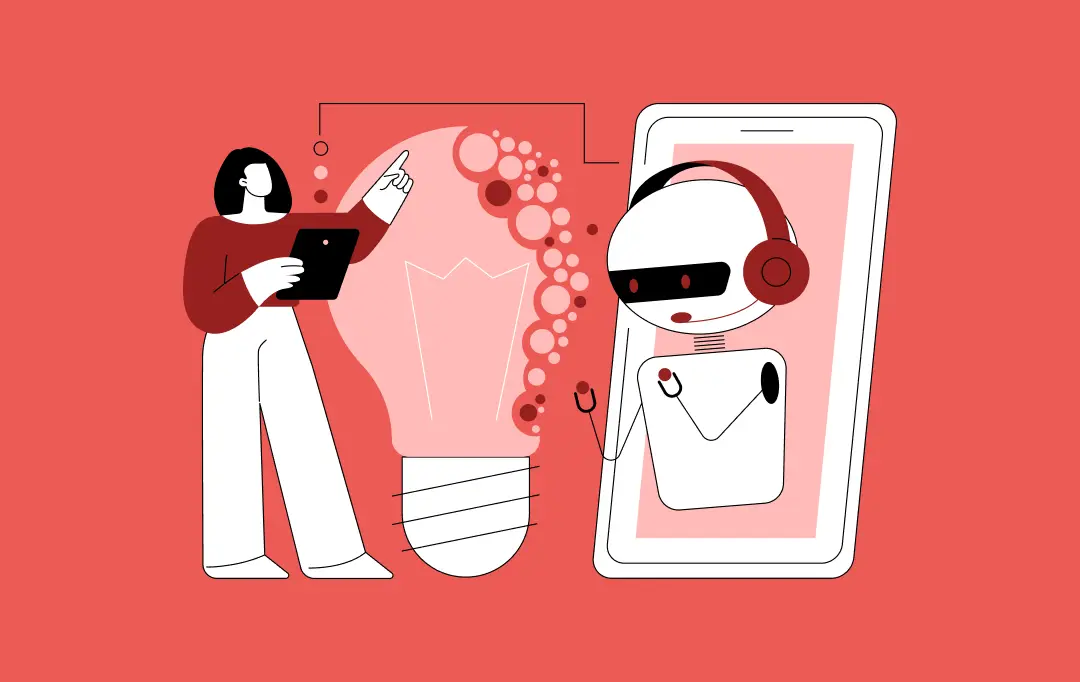
How Much Does It Cost to Build an AI App in Dubai?
Key takeaways: AI app costs in Dubai typically range from AED 80,000 for simple builds to AED 800,000+ for enterprise systems. Dubai is past AI experimentation, and not investing now means catching up later at higher cost. The real budget is driven by data, integrations, architecture, and compliance, not just app features. Hidden costs like…
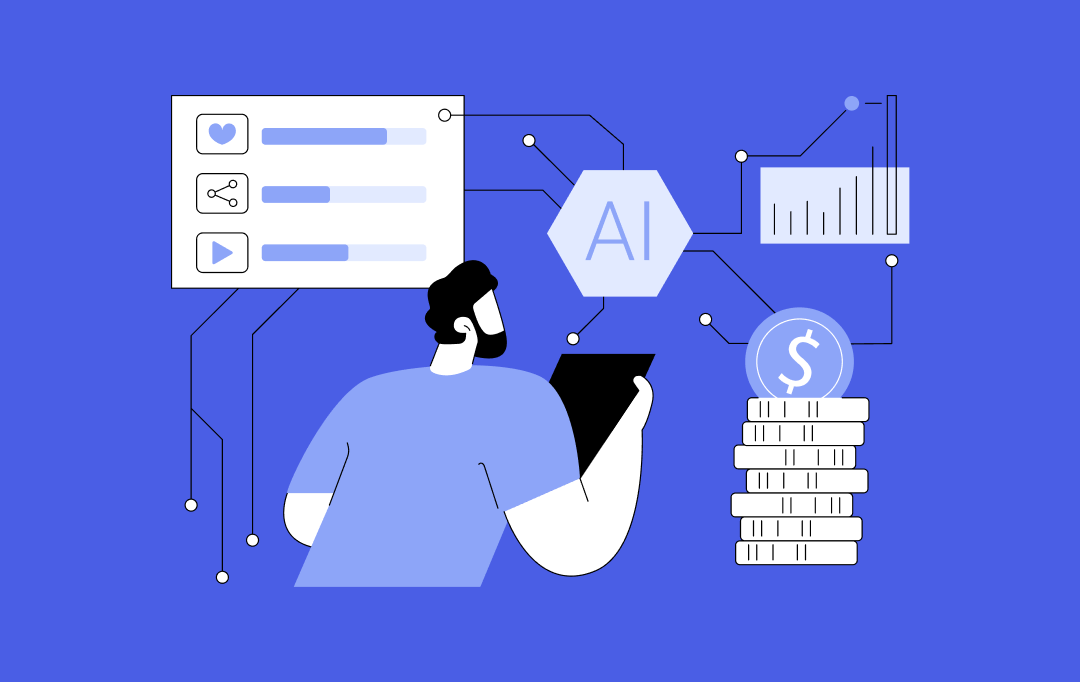
How AI Tokenization is Enabling Secure and Transparent Asset Ownership in 2026
By 2026, AI tokenization has moved beyond early-stage experiments and pilot projects. Tokenizing real-world assets has become a serious commercial strategy for financial institutions, supply chain operators and technology-driven enterprises. A 2025 report by the World Economic Forum in collaboration with Accenture highlights tokenization as a key mechanism for value exchange in modern financial markets.…

13 Ways Generative AI is Transforming the Hospitality Industry
Key takeaways: The most mature applications of Generative AI for hospitality are in guest service, revenue management, marketing, and operations automation. Real value comes from integrating generative AI into hospitality operations and existing PMS, CRS, CRM, and POS systems, rather than using stand-alone tools. Successful programs treat Generative AI in hospitality as a product, incorporating…
